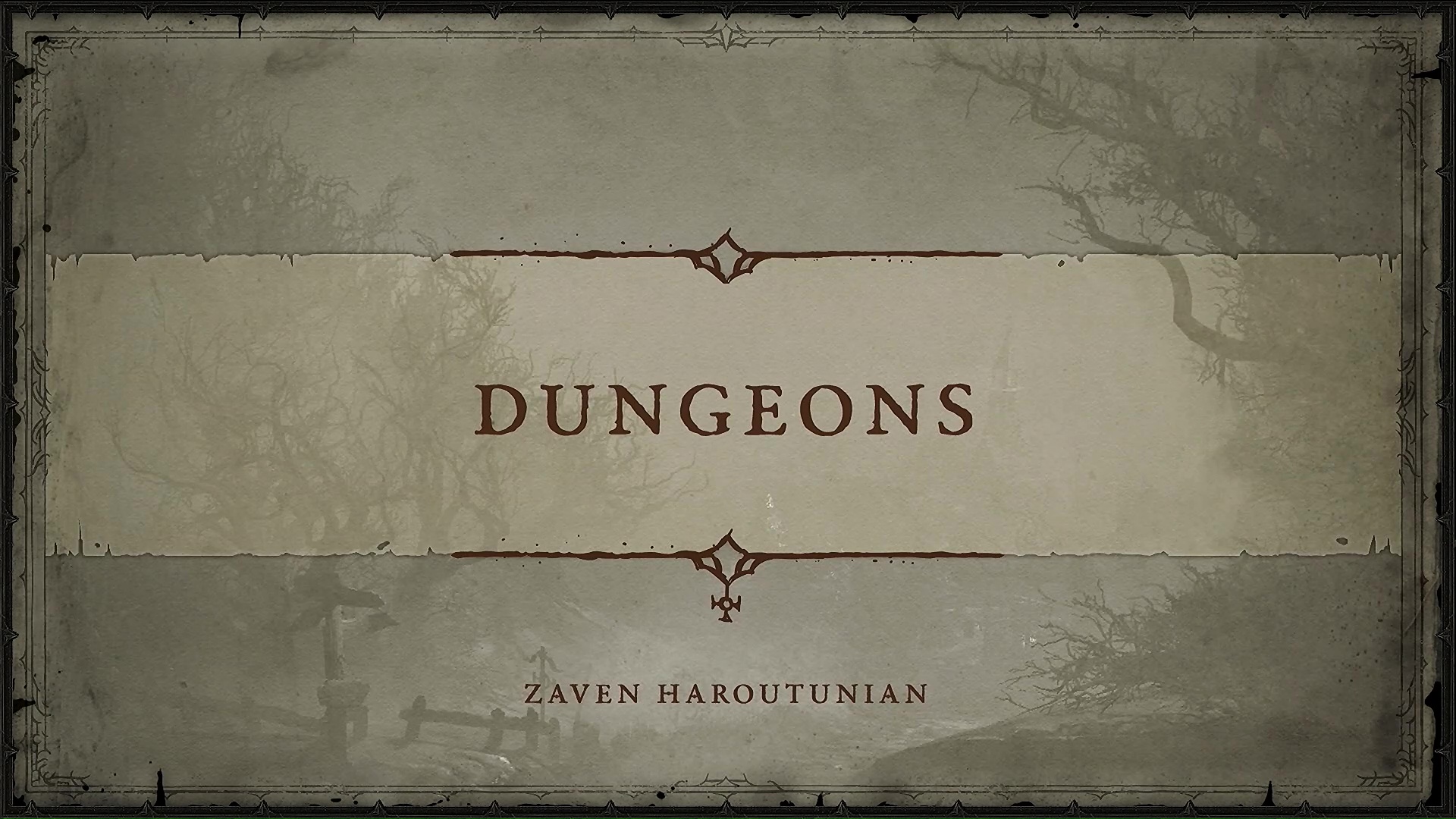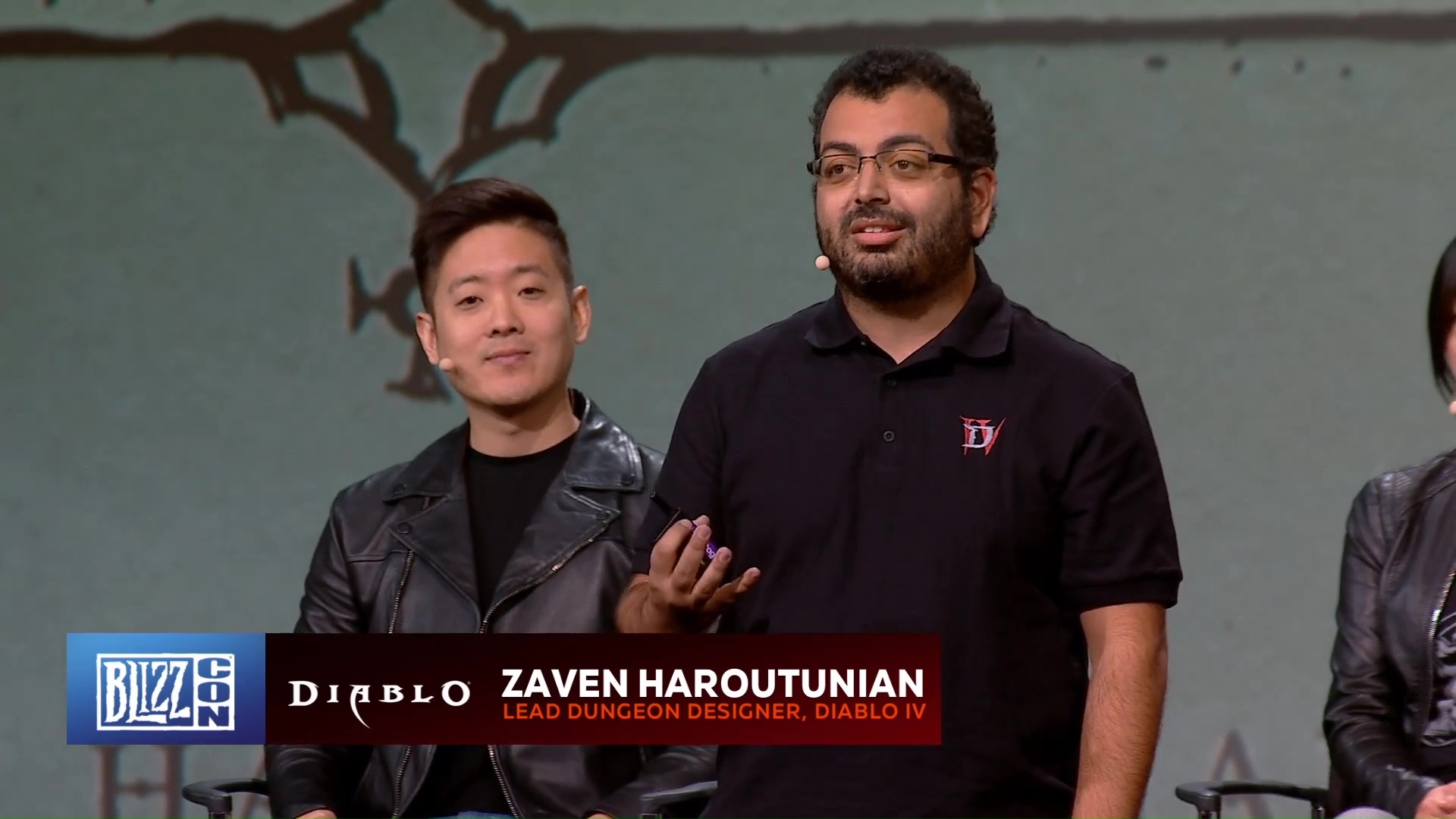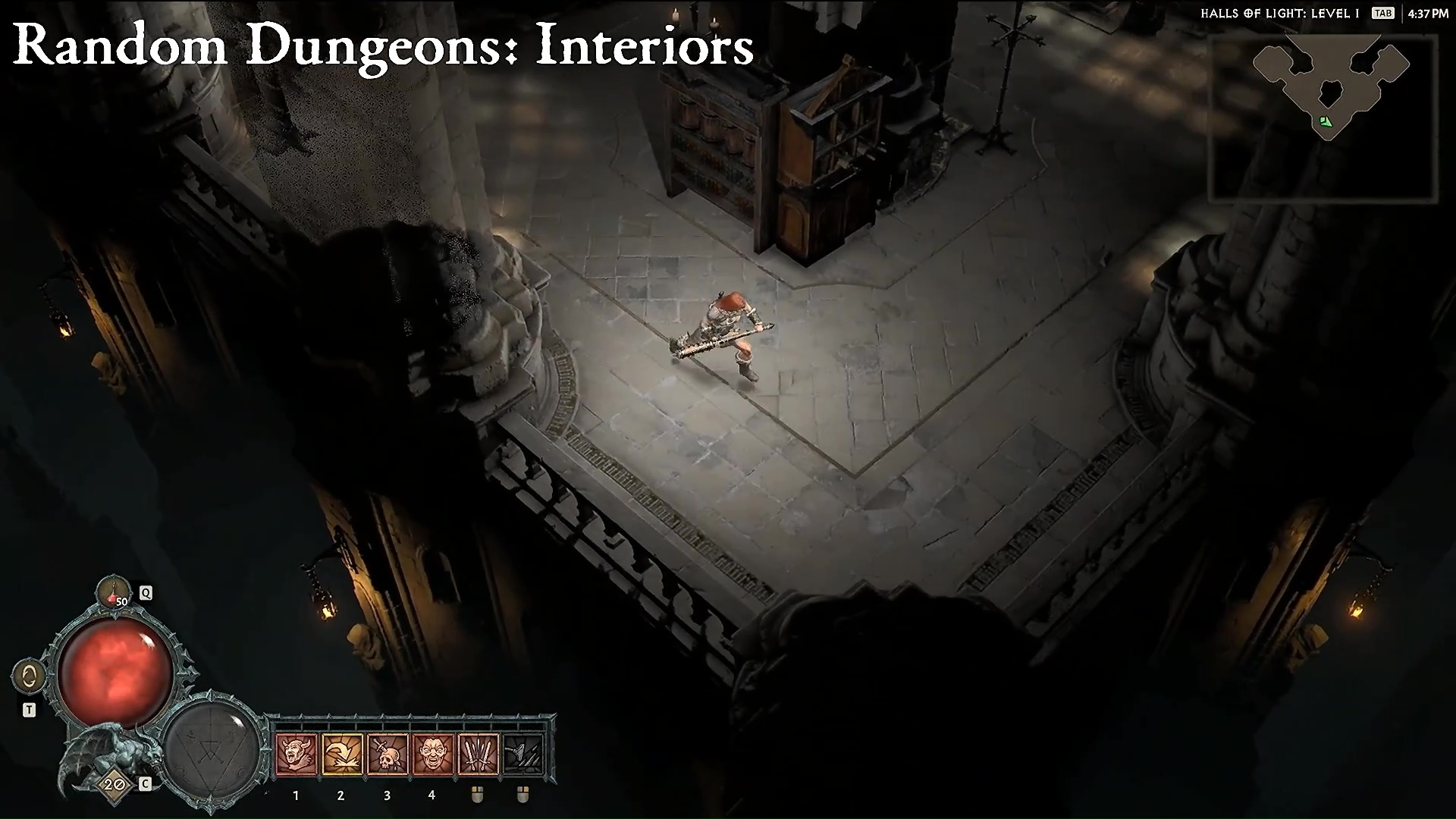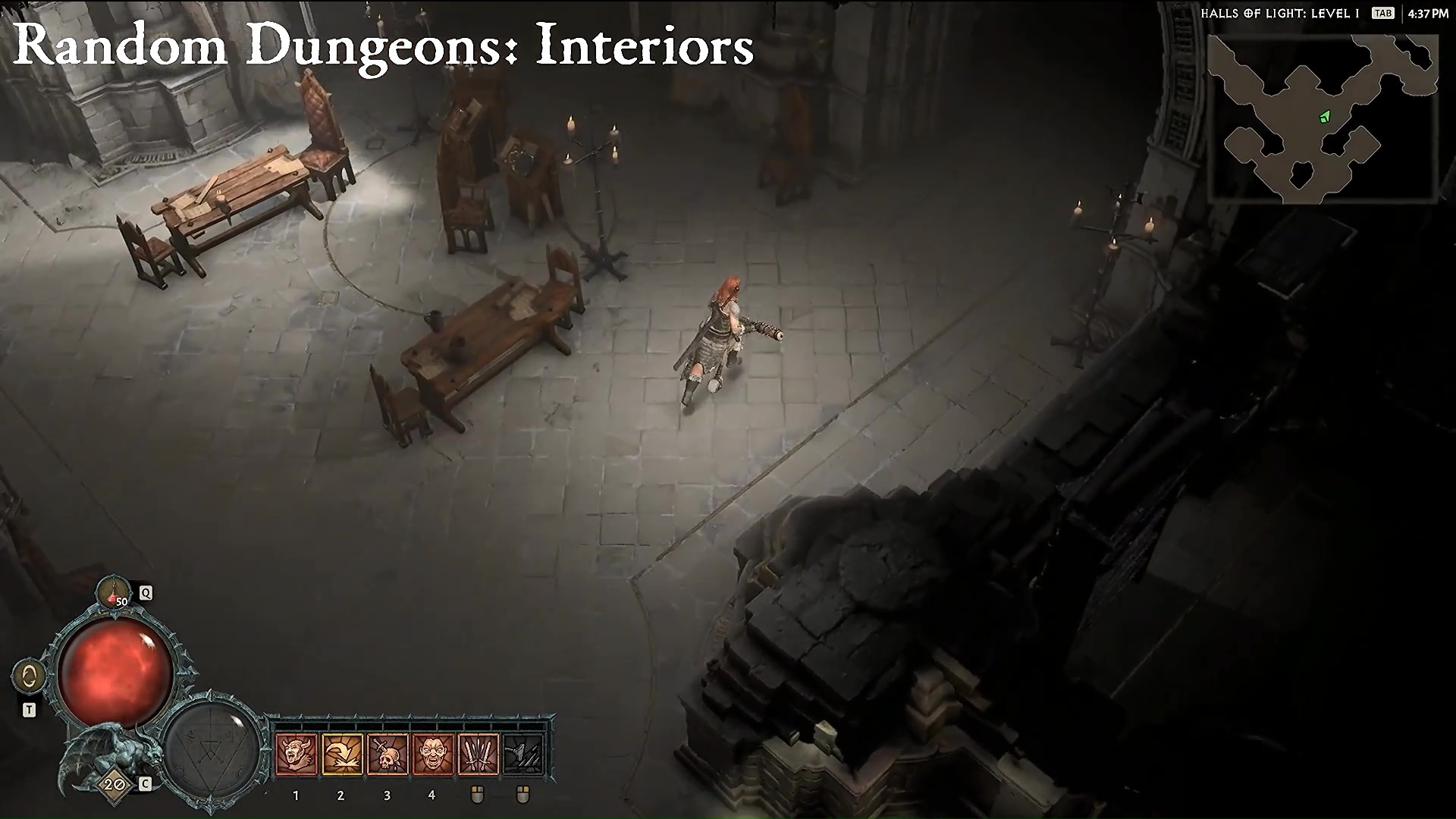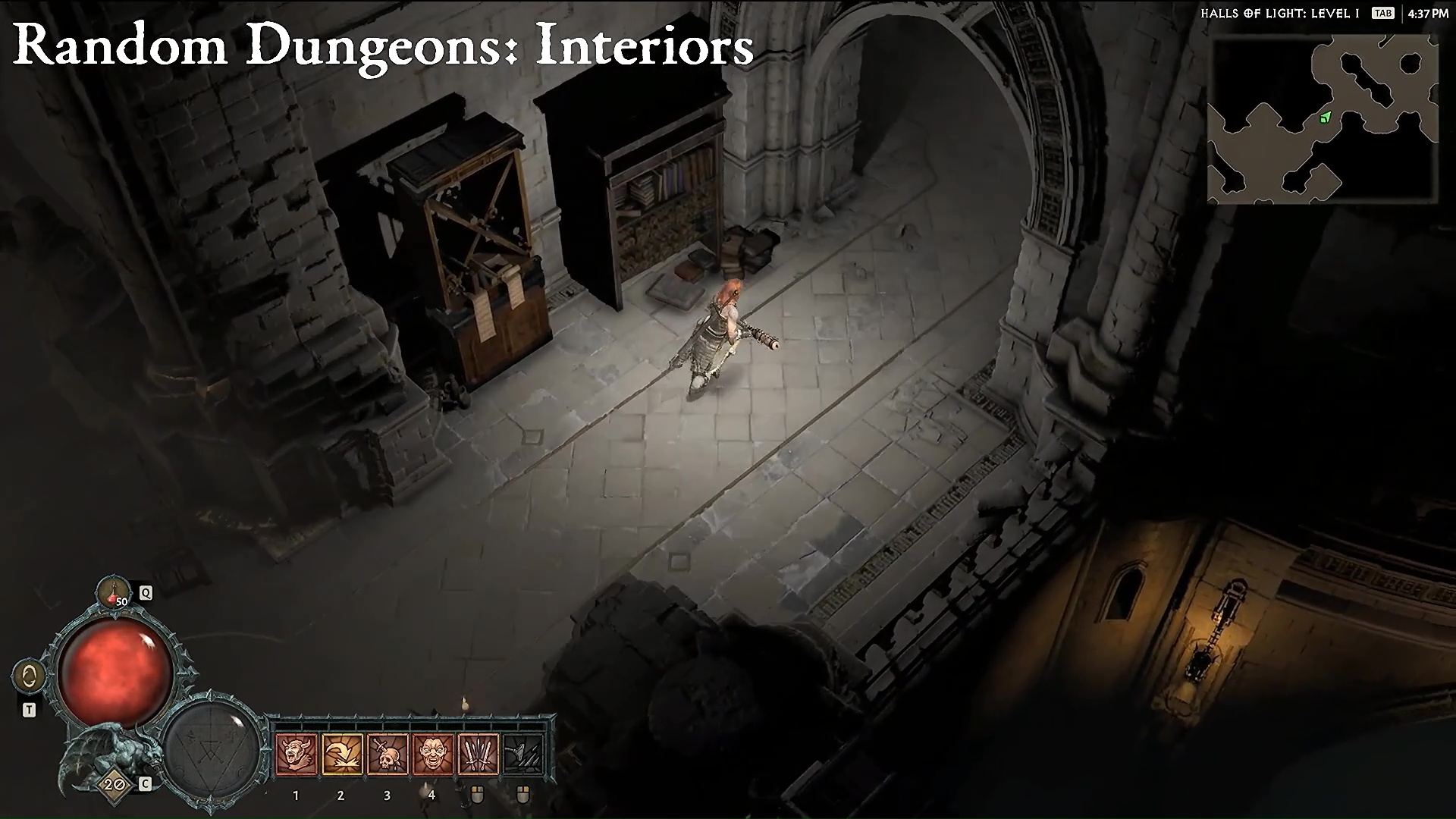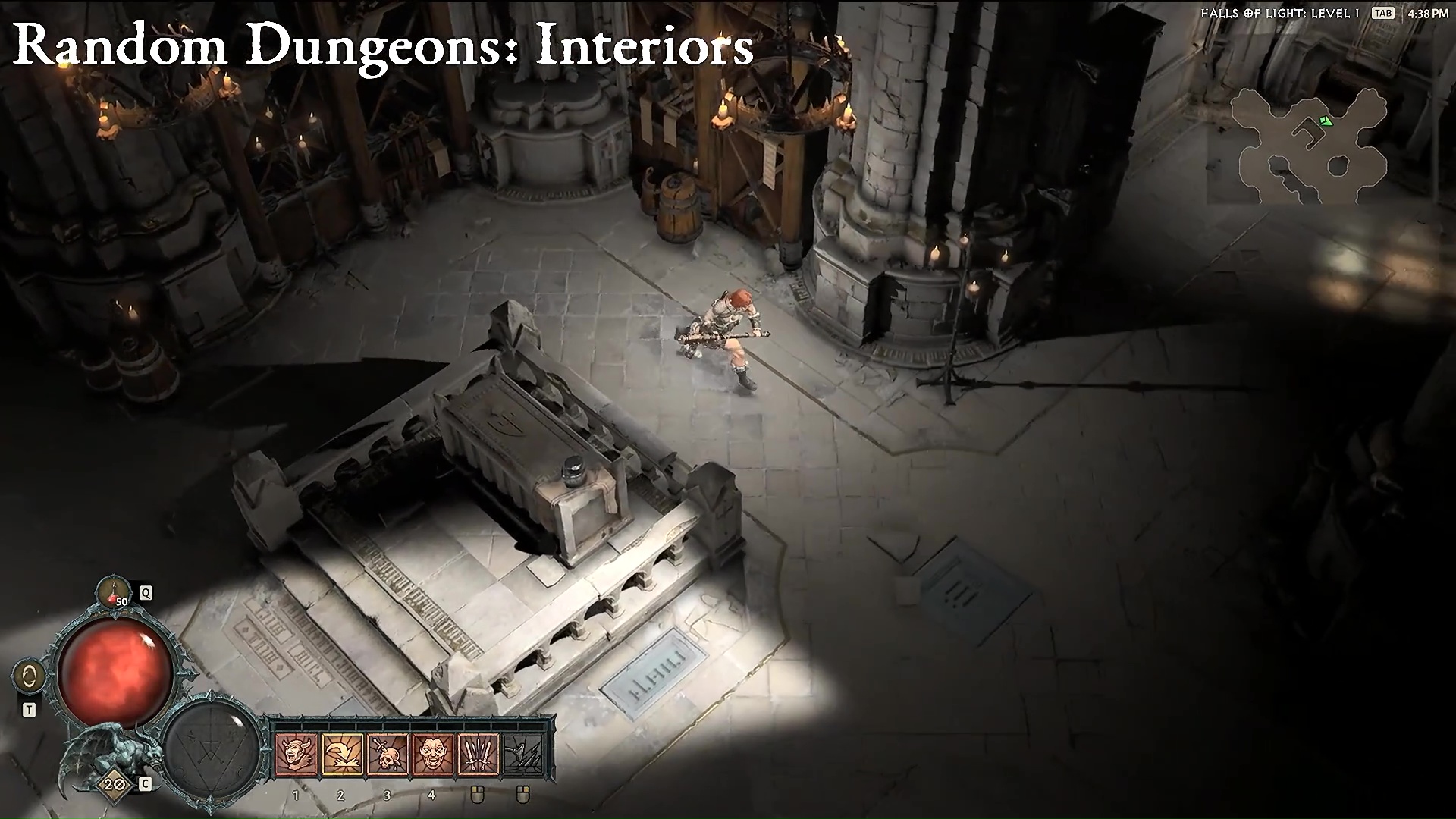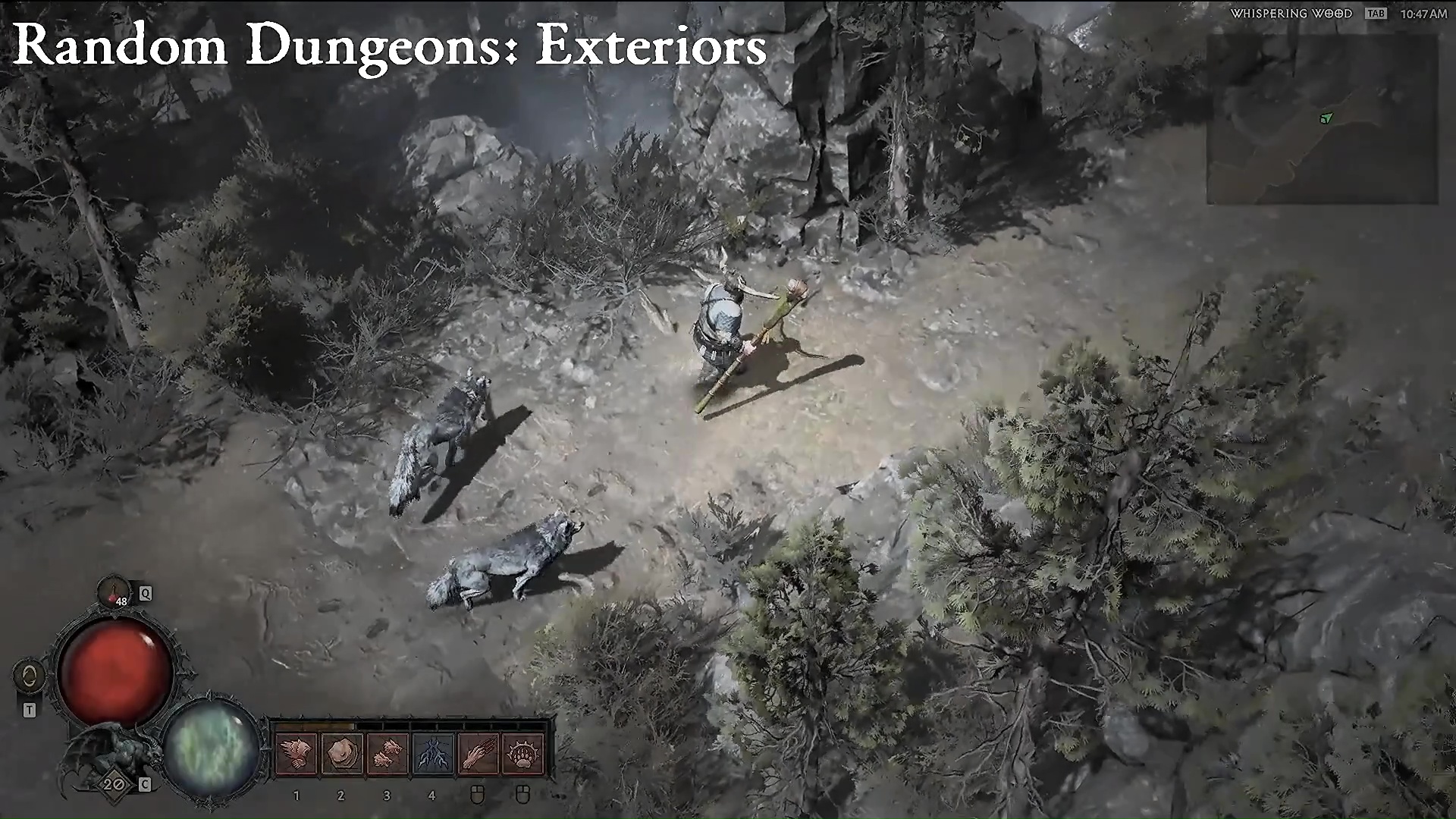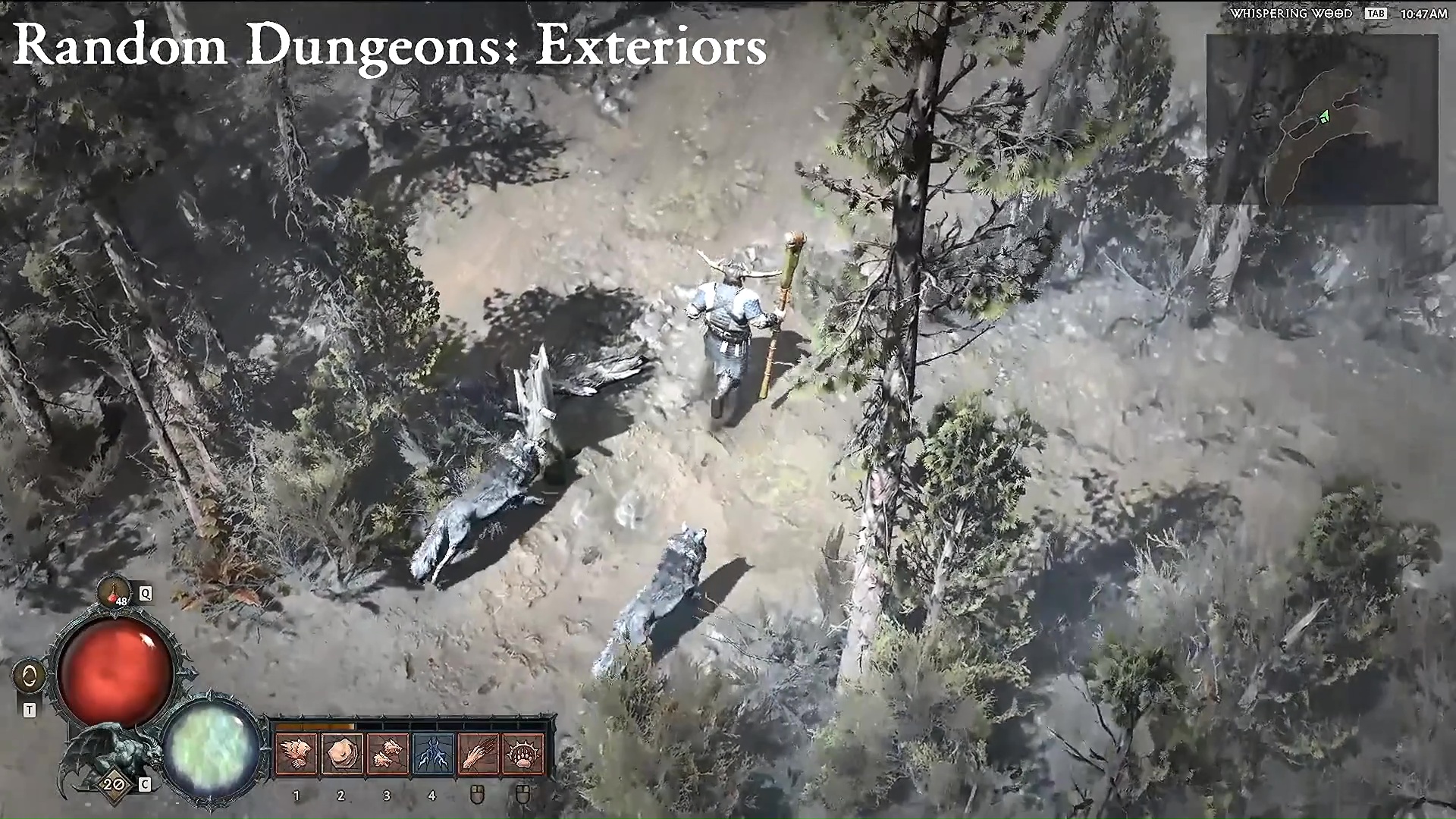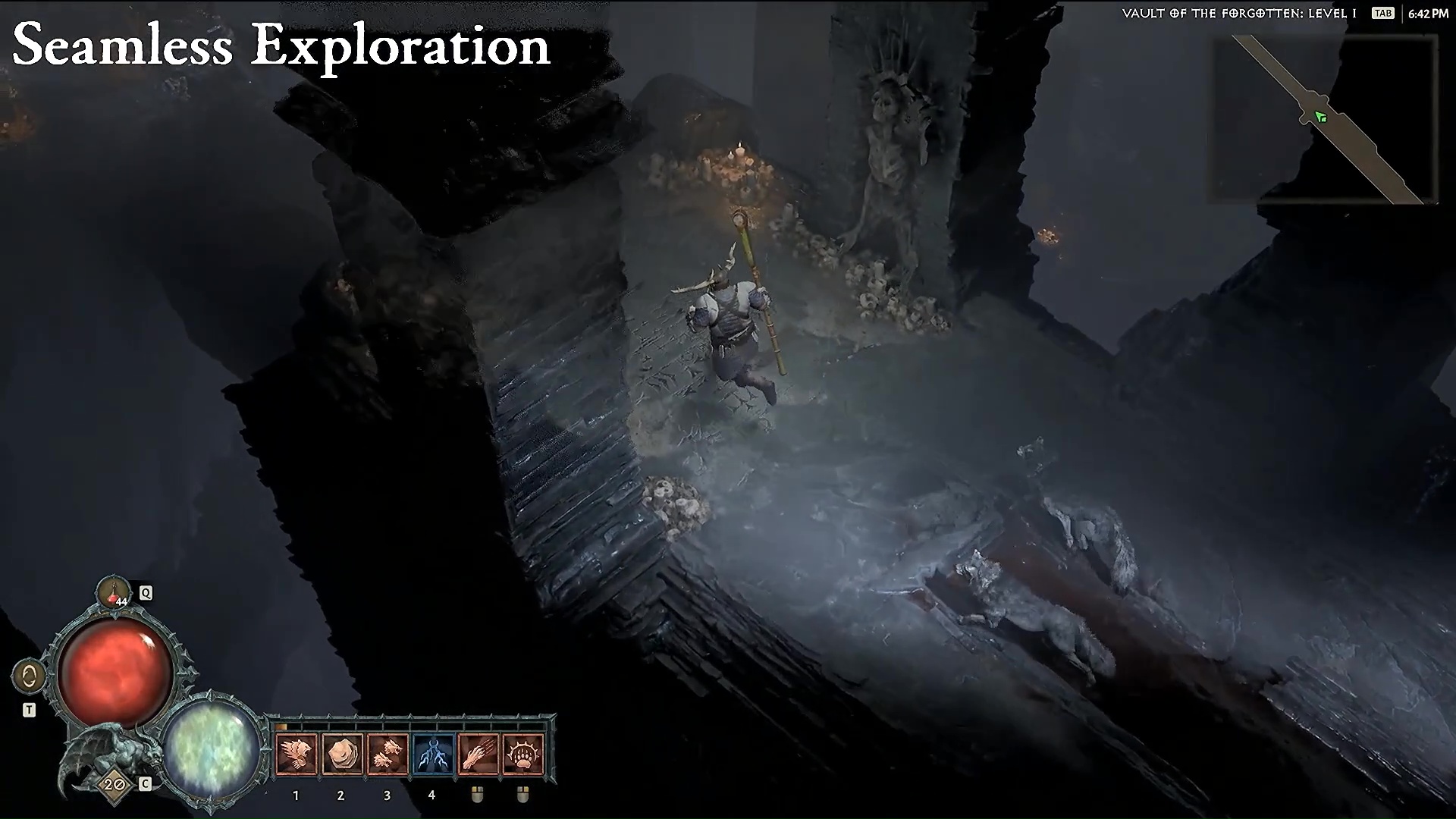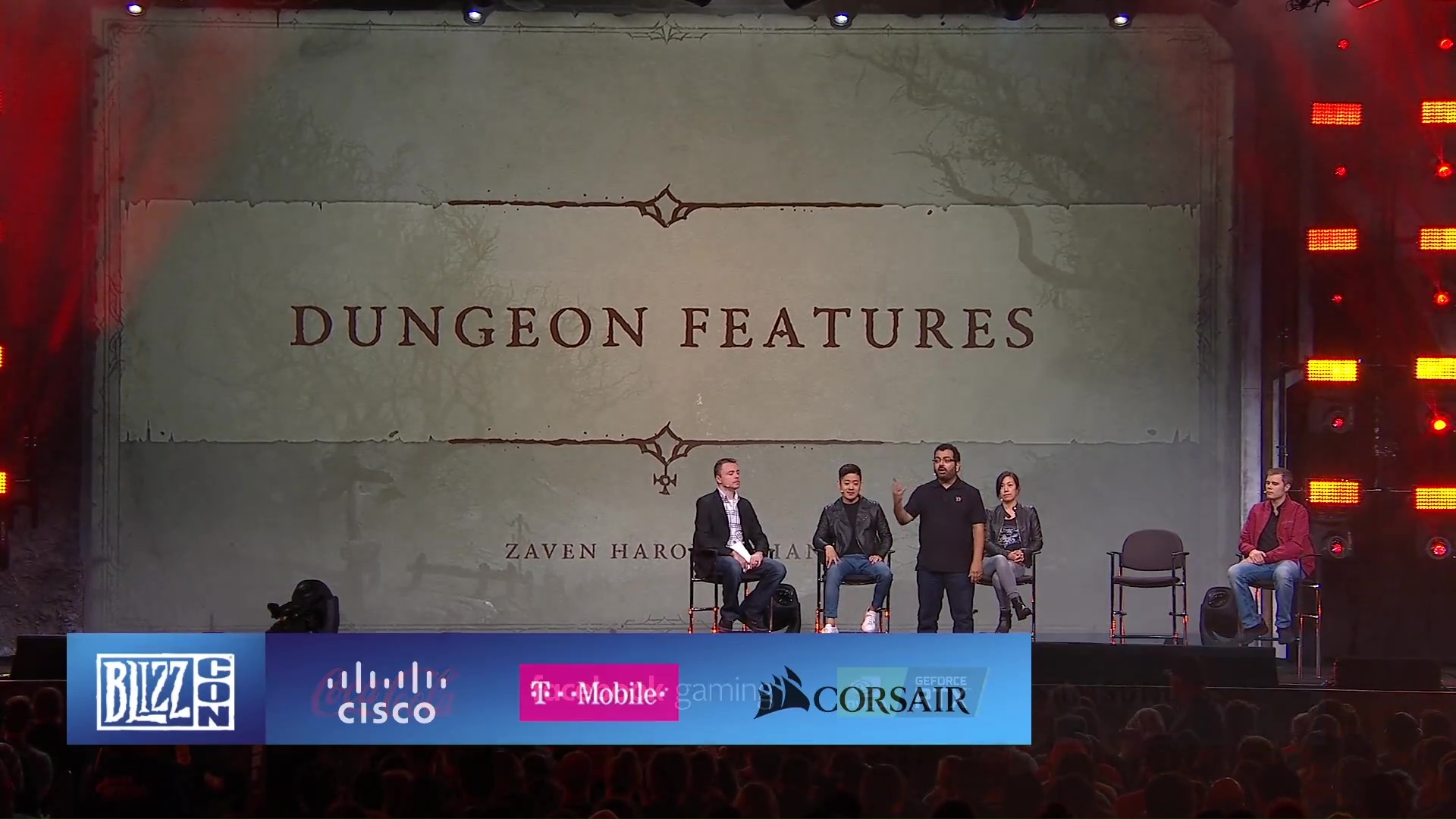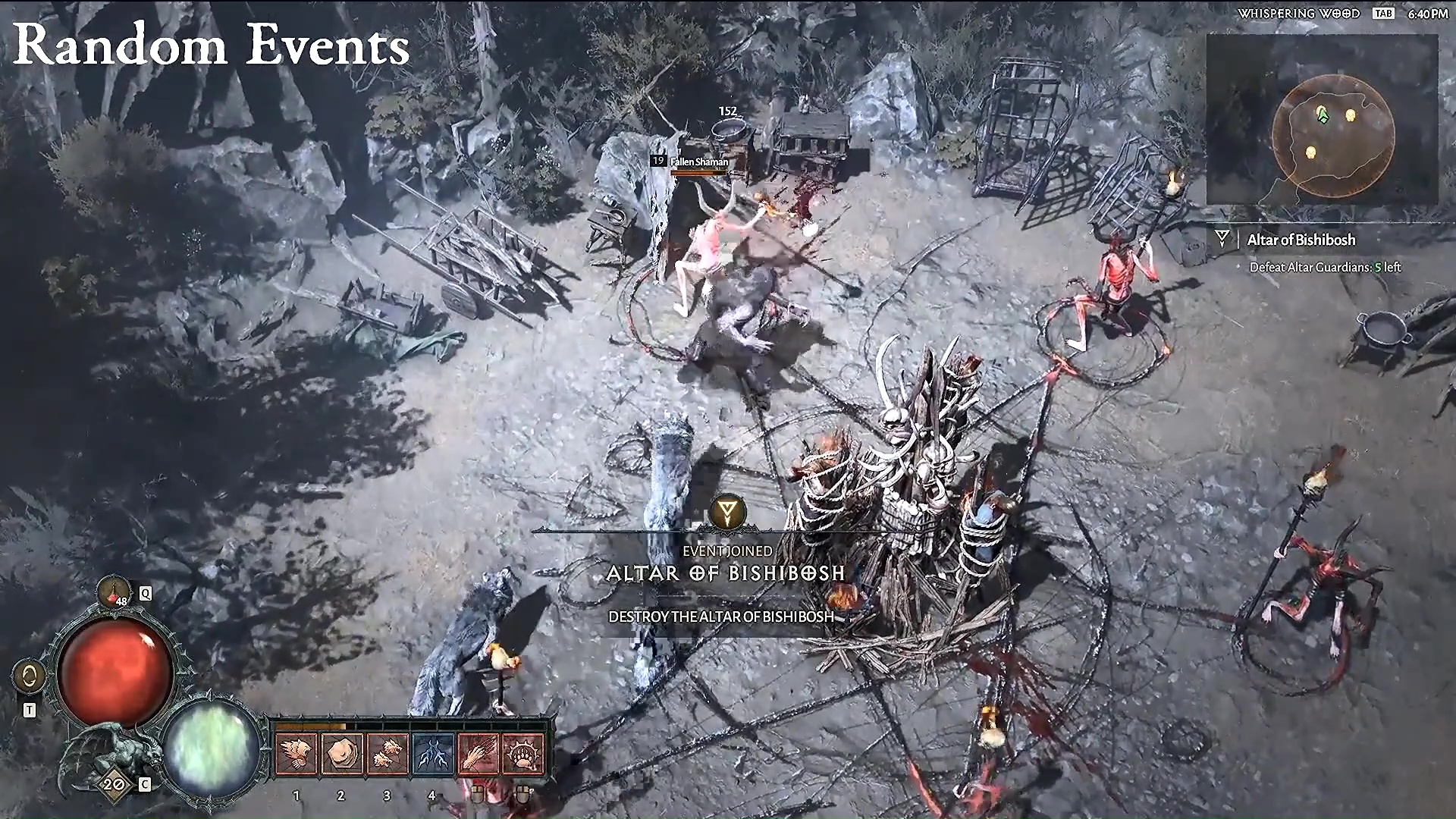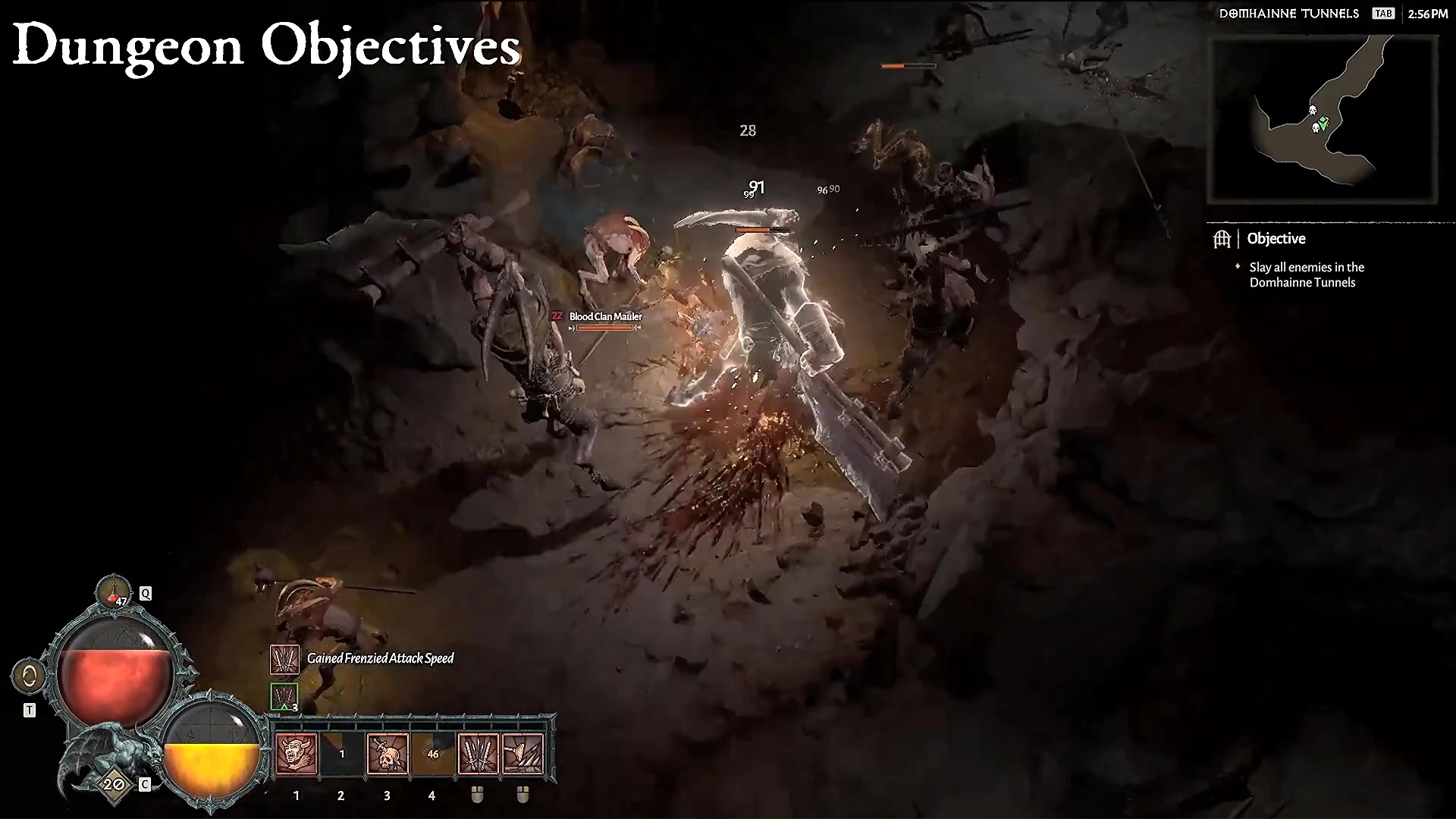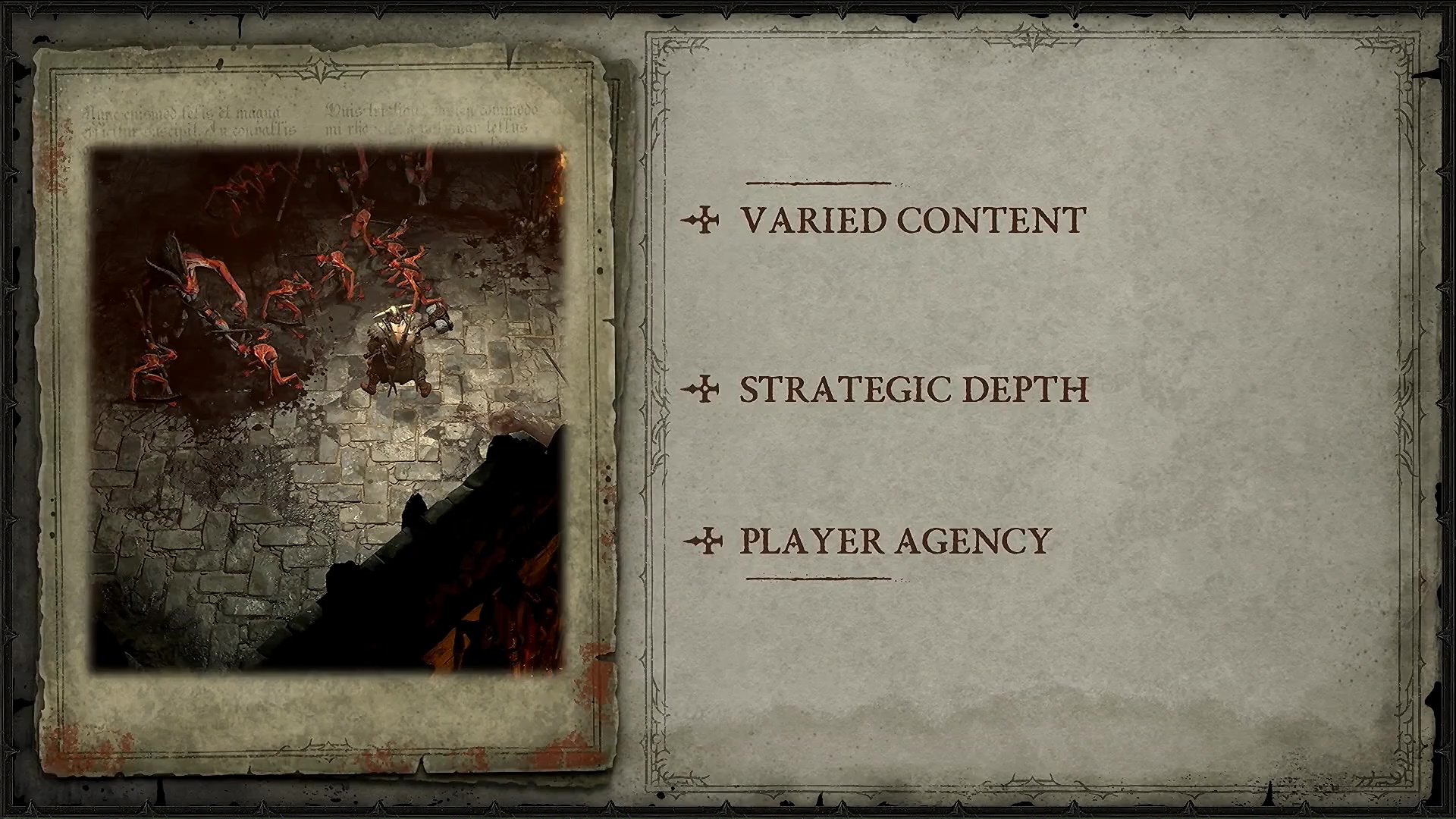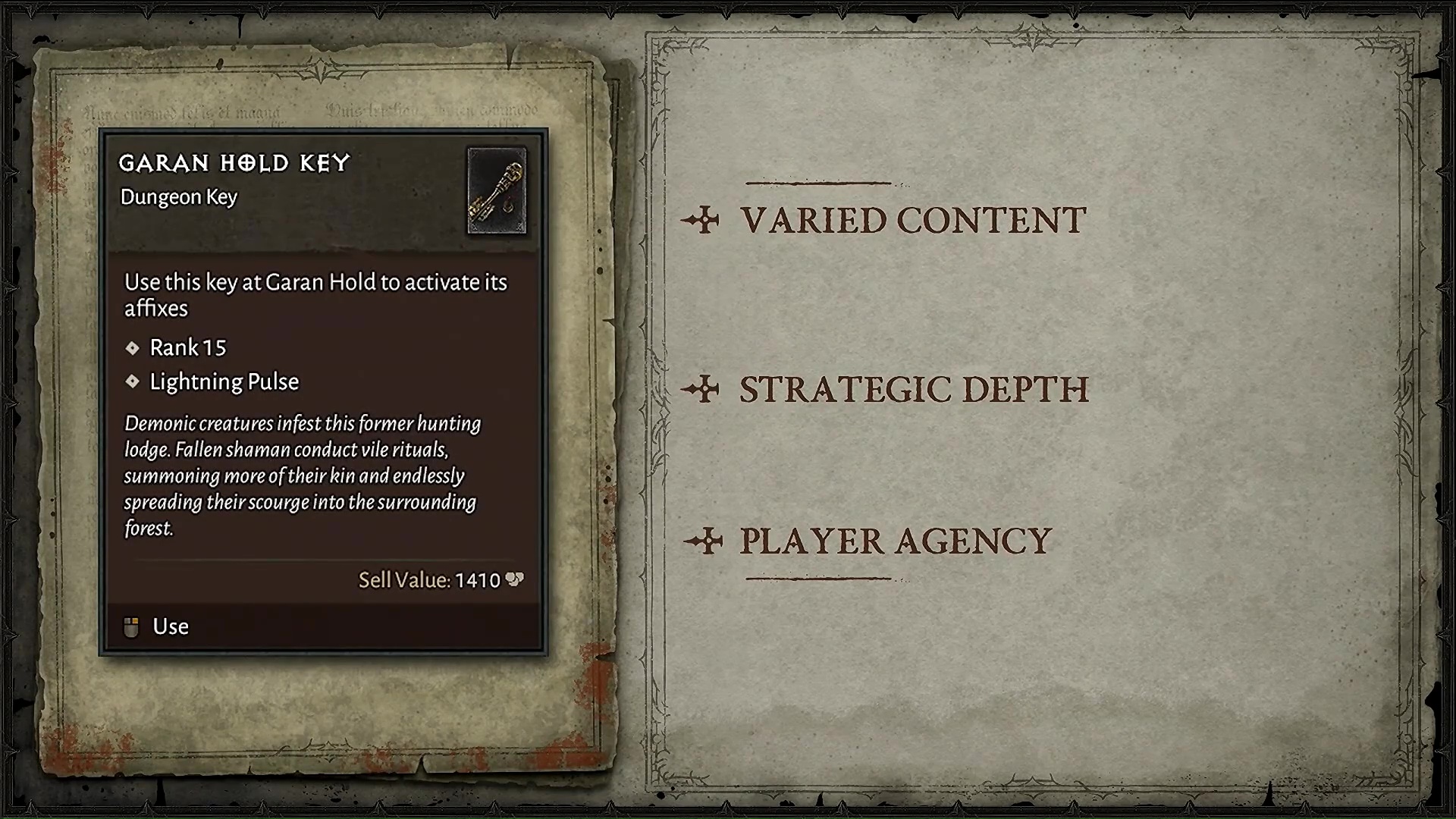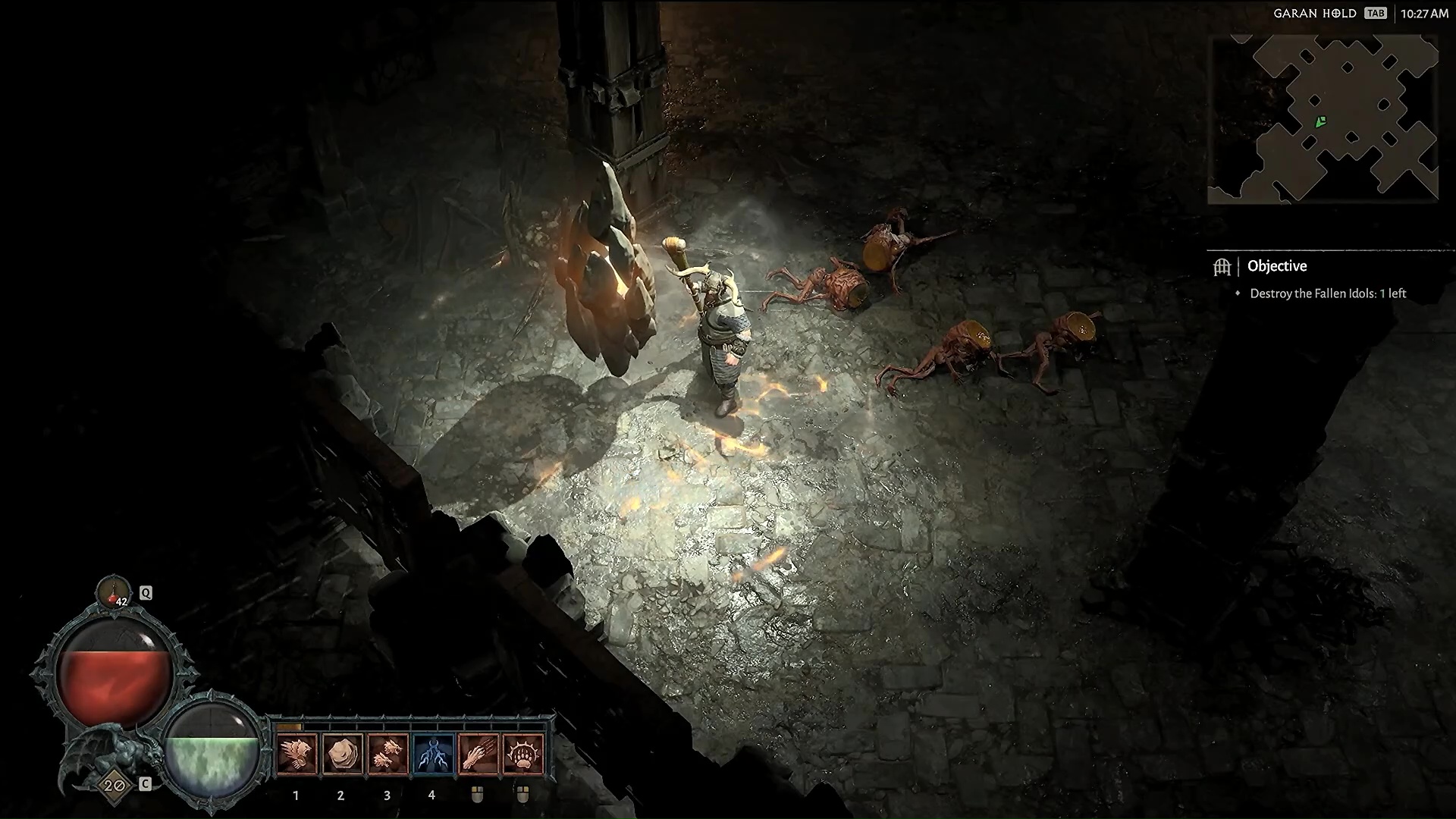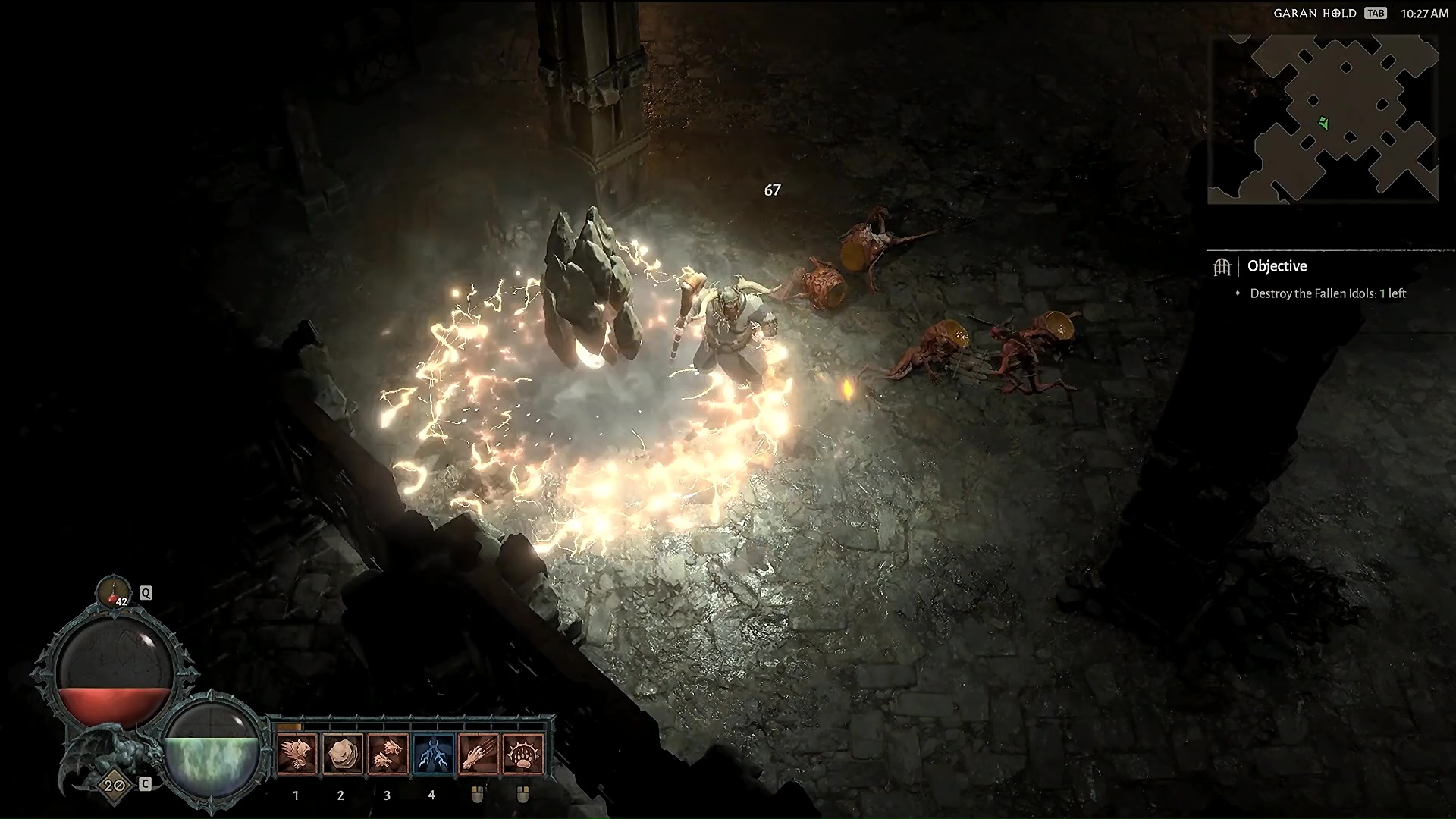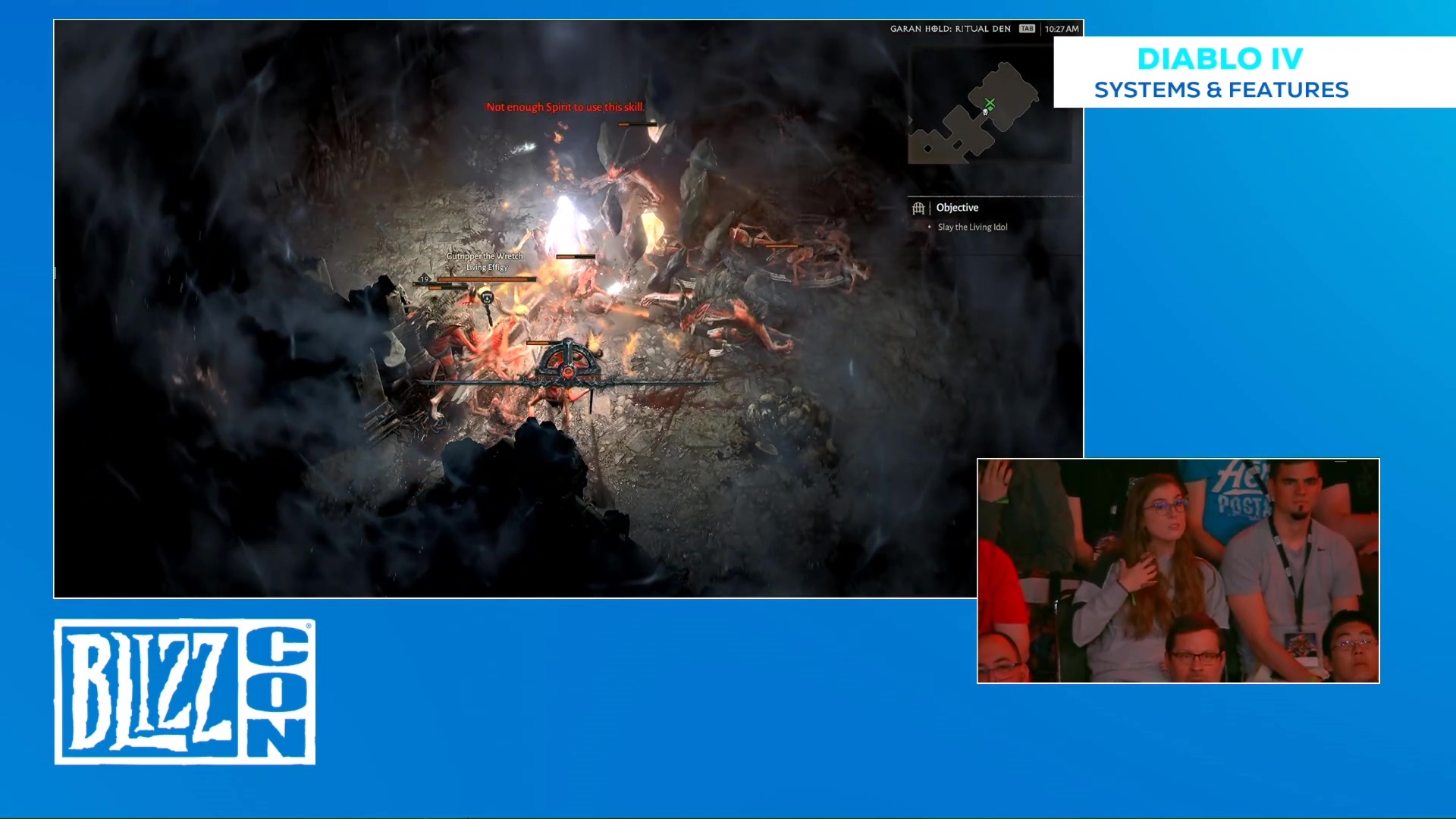DUNGEONS
Zaven: Hey, BlizzCon. Let’s talk about the dungeons of Diablo IV. Dungeons are a foundational part of the Diablo series.
They are a credible part of that legacy. Randomly generated dungeons are core to a part of that. Sanctuary is a large and diverse place and we are filling it with lots of dungeons for you to explore, slay and loot your way through.
So we want dungeons to be dark, dangerous, unpredictable places in the world. Even the holiest of places can fall to corruption — like the Zakarum Monastery behind me. Since they are randomly generated, that means until you venture down their dark corridors, you are not really sure what you are going to find. It could be treasure. It could be death. This is the tension between risk and reward that really defines that dungeon crawling experience in Diablo IV, where anything can happen.
And also… dungeons are not always random-generated buildings. There are randomized exterior environments as well. These exterior dungeons are randomly generated just like the interiors are. So you can have like Whispering Wood, here behind me, as an example. We want dungeons to feel like real explorable places in the world. We also built our dungeon system from the ground up with this idea that we call seamless exploration.
What seamless exploration means is no more loading screens to go down the second floor, third floor, tenth floor — whatever any other area.
(Big applause)
It all happens seamlessly in the game, and with seamless exploration we can even blend this randomly-generated tilesets together. We can go from a randomly-generated cave and walk straight into a randomly-generated forest; and this means dungeons can become sprawling interconnected places to explore and discover, where the actions in one part of the dungeon can actually affect what happens in the other parts.
As you are crawling your way through these profane halls, or stepping cautiously through a misty woods, what are you doing in these dungeons, what can you find? Well, we have two major pieces of content systems to talk about today. One is random events, and the other is dungeon objectives.
RANDOM DUNGEON EVENTS
First up, random events are back; and random events are a core part of that classic dungeon crawling feeling in Diablo IV; and one major change compared to our past games is that they are no longer restricted to a specific place in the world.
This is one of our new events: the Altar of Bishibosh — and is Bishibosh found there? I am not sure. So this event can also show up in the Whispering Wood; it is in Garan Hold in the demo, you can totally find it. You got a good chance of finding it; and this allows dungeons to actually have a more broader range of possible events. Every time you play, you can actually find a different kind of event in it; and those events can actually follow monsters around, just like elites can, and makes it way more broad range of things to do.
DUNGEON OBJECTIVES
So we have random dungeons, and we have random events; but for us it is also really important that dungeons have this sense of identity, that they have something that helps to set them apart from each other. So the other thing we are adding is the dungeon objectives. So the dungeon and its objective are designed together as two parts of a cohesive whole. Objectives are completed by doing specific things in the dungeon, like killing a Sea Witch; and progressing the objective also increases the danger and the rewards found inside that dungeon.
So as an example, this is Domhainne Tunnels — playable in the demo today. The objective here is to slay all enemies. We have seen that before; but in Domhainne as you make progress in that effort, the enemy respawns. They send powerful elites to hunt you down, and kill you no matter where you are, no matter what you are doing in that dungeon. Yes, even during the random event. Yes, even during the boss fight; and since every dungeon has its own custom objective, we have varied gameplay across the dungeons as a whole; and memorable dungeons with a strong underlaying identity.
Now we are still exploring multiple other dungeon systems and features; but we do have one more thing to talk about today. Yea, let’s talk about end-game dungeons in Diablo IV.
END-GAME DUNGEONS
What do we look for in a Diablo end-game? What would we be excited to play? When we started thinking about this, like Ok, varied content. That’s critical. I don’t want to be just doing just one thing over and over again in end-game. Making powerful, unique builds as a core part of Diablo; and we need content that encourage that level of strategic depth; and honestly, player agency is super important. Random dungeons are awesome. I love them; but I I dont want to just feel like I am reacting to what the game is giving me. I don’t want to feel like I am in rails. So how are we doing this?
We are adding a new type of item called a Dungeon Key. How do they work? Well, when a key drops in the world, it drops for a very specific dungeon in the world. Using this key will upgrade that dungeon into an end-game dungeon. The key also has a specific difficulty rank. The higher the difficulty, the higher of the quality of the drops that you get within that dungeon; and finally, Dungeon Keys can roll specific dungeon affixes. Now this is an entirey new feature.
These are modifiers that increase the difficulty and complexity of the dungeons found throughout the game. They apply the affix to either: the players; the enemies; the environment; or any or all of the three of these. So within a system like this, you can imagine an affix that says something like All enemies are invisible unless they are in combat (or something like that). Every time you walk in a room, you are not sure what you are going to find; and you can also have another affix that says there are double bosses in this dungeon; and how having both of those affixes in the same key can be a very different outcome when you are playing any of the dungeons in the game.
Let’s look at an example. This is Garan Hold. Has Lightning Pulse. Let’s see what that looks in the game. So Lightning Pulse as this cool pilar of lightning energy and stone that hunts down the closest player, and deals damage to them. You can’t kill it. You can’t stun it. You can’t stop it until that dungeon objective is complete.
But this is still Garan Hold. The same dungeon we have playable in the demo today. You still has the same objective. You will still the same enemies, and you still have access to the same randomized content within it — and this is how we get all three of our goals. We get varied content, varied gameplay, and any regular dungeon can become an end-game dungeon by finding a Dungeon Key for it; and the plan is to have hundreds of dungeons in the game. We get strategic depth. The key provides a lot of information for you to plan a specific build around. You can customize your loadout, your skills, your talents, your items — to tackle that specific dungeon.
We also get player agency. You can decide whether you want to use a key and upgrade a dungeon; or if you want to salvage it for crafting. Our plan is to drop a lot of keys so that you guys actually have exact control over which dungeons are your end-game dungeons. So we will learn a lot about dungeons. Let’s learn more about the monsters that you kill inside them; and for that I’m actually going to hand it over to Joe Shely, lead monster wrangler, really.
NEXT: MONSTERS
| BLIZZCON 2019 DIABLO IV SYSTEMS & FEATURES PANEL TRANSCRIPT | |||
| 1. Classes | 2. Skill & Talents | 3. Sharing the Open World | 4. Dungeons |
| 5. Monsters | 6. Items | 7. Q&A | |
| Buy the BlizzCon Virtual Ticket while VODs last. | |||
Hope you enjoyed this article. Please, support Blizzplanet on Patreon (monthly) or PayPal (once), and follow us on Twitter, Facebook, YouTube, and Twitch for daily Blizzard games news updates. |
 |

